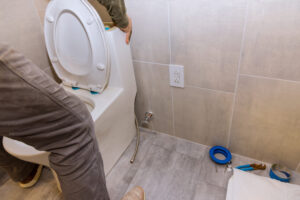
When it comes to household utilities, water conservation is crucial for both environmental sustainability and cost efficiency. One of the most common sources of water wastage in homes is through toilets. A leaking or inefficient toilet can silently waste hundreds of gallons of water each day, leading to inflated water bills and unnecessary strain on local water resources. In this comprehensive guide, we will explore how to identify if your toilet is wasting water and what steps you can take to rectify the issue.
Signs of Water Wastage
High Water Bills
One of the most obvious indicators that your toilet may be wasting water is a sudden increase in your water bill without a corresponding increase in usage. If your bill seems unusually high, it’s worth investigating potential causes, with your toilet being a prime suspect.
Continuous Running Water
A toilet that continues to run after flushing is a clear sign of a problem. Sometimes, the issue can be as simple as a misaligned flapper valve that fails to seal properly after flushing, causing water to leak into the bowl continuously.
Hissing or Trickling Sounds
Even if your toilet isn’t visibly leaking, hissing or trickling sounds coming from the tank can indicate a slow and steady leak. These sounds often occur when water is slowly flowing into the bowl due to a faulty flapper or flush valve.
Visible Leaks
Inspect the area around the toilet regularly for any signs of visible leaks. Check for puddles of water on the floor, dampness around the base of the toilet, or water stains on nearby walls. These are clear indicators that water is escaping from the toilet system.
Conducting a Simple Test
The Dye Test
An effective way to check for silent leaks in your toilet is the dye test. Place a few drops of food coloring or a dye tablet into the toilet tank and wait for about 15-20 minutes without flushing. If the colored water seeps into the bowl without flushing, you have a leak. This test helps identify leaks that may not be immediately visible.
Assessing Toilet Efficiency
Check the Flush Mechanism
Older toilets, particularly those installed before 1994, are likely to be less water-efficient compared to newer models. Newer toilets are designed to use significantly less water per flush (1.6 gallons or less compared to older models which used 3.5 gallons or more). If your toilet is outdated, upgrading to a newer, more efficient model could result in substantial water savings over time.
Evaluate Flush Performance
Inefficient flushing can also contribute to water wastage. If your toilet requires multiple flushes to clear the bowl completely or if it frequently clogs, it may be using more water than necessary. This inefficiency not only wastes water but also indicates potential issues with the toilet’s internal mechanisms.
DIY Fixes for Common Issues
Adjusting the Flush Valve
Sometimes, a minor adjustment to the flush valve or flapper can solve the problem of continuous running water. Ensure that the flapper creates a proper seal after each flush to prevent water from leaking into the bowl.
Replacing Worn-Out Parts
If the toilet flapper, flush valve, or fill valve are worn out or damaged, they may need to be replaced. These components are relatively inexpensive and can be replaced without professional help if you’re comfortable with basic DIY tasks.
Cleaning and Maintenance
Regular cleaning and maintenance of your toilet can also prevent water wastage. Mineral deposits and debris can accumulate in the flush valve or around the flapper, affecting their performance. Cleaning these parts periodically ensures smooth operation and reduces the likelihood of leaks.
When to Seek Professional Help
Persistent Issues
If you’ve tried DIY fixes and your toilet continues to waste water, it may be time to consult a professional plumber. They can diagnose more complex issues such as internal leaks or mechanical failures that require specialized knowledge and tools to repair.
Upgrading to Water-Efficient Fixtures
Consider upgrading to a water-efficient toilet if your current model is outdated and inefficient. Modern toilets are designed to use less water per flush while maintaining effective performance, resulting in significant long-term savings on water bills.
Conclusion
Ensuring that your toilet is not wasting water is not only beneficial for your finances but also for conserving precious water resources. By being vigilant for signs of water wastage, conducting regular checks, and promptly addressing any issues that arise, you can contribute to a more sustainable home environment. Remember, even small leaks or inefficiencies can add up over time, so proactive maintenance is key to keeping your toilet running efficiently.
Next time you wonder, “Is my toilet wasting water?” refer back to this guide to identify the issue and take the necessary steps to resolve it. Your efforts towards water conservation can make a significant difference, one flush at a time.

